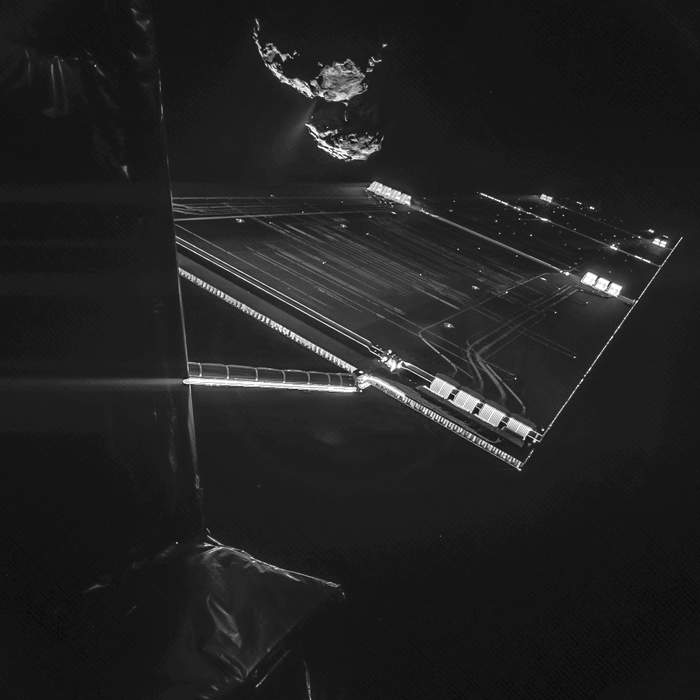November 6-12, Current Events Lesson Plan
Current Event: First Touchdown on Comet
The European Space Agency (ESA) recently made space flight history by deploying a landing craft to the surface of a comet. The landing craft, Philae, landed on Comet Churyumov-Gerasimenko (nicknamed Chury) minutes after separating from its mother ship, the Rosetta spacecraft. Since its 2004 launch, Rosetta traveled 3.7 billion miles (6 billion kilometers) to meet up with the comet. Philae carries 10 instruments for studying Chury, including a drill to take samples from below the surface. Scientists are particularly interested in learning about the chemical makeup of the comet and its structure. The solar-powered lander Philae is expected to continue its investigations for at least a week. More than 10 space missions have been launched to study comets. However, until Rosetta, no mission had touched down on a comet.

The Rosetta spacecraft appears in a selfie with Comet 67P/Churyumov–Gerasimenko in October 2014, made using a camera on the Philae lander. At that point, Rosetta was about 10 miles (16 kilometers) from the surface of the comet. (ESA)
Objective:
A comet is a bright heavenly body with a star-like center and often with a cloudy tail of light. A comet’s nucleus (center) is a ball of ice and rocky dust particles. As a comet nears the inner solar system, heat from the sun vaporizes some of the ice on the surface of the nucleus. The comet spews gas and dust particles into space. This gas and dust forms the comet’s coma. Radiation from the sun pushes dust particles away from the coma. These particles form a tail called the dust tail. Because comet tails are pushed by solar radiation and the solar wind, they always point away from the sun. Most of the comets that can be seen from Earth travel around the sun in long, oval orbits. We can see comets because the gas and dust in their comas and tails reflect sunlight. Also, the gases release energy absorbed from the sun, causing them to glow. The best-known comet is Halley’s Comet, which appears in the sky about every 76 years. The Behind the Headlines news story and related World Book articles explore comets and other astronomical topics.
Words to know:
- Astronomy
- Comet
- European Space Agency (ESA)
- Halley’s Comet
- National Aeronautics and Space Administration (NASA)
- Solar system
- Space exploration
Discussion Topics:
1. Some comets, including Halley’s Comet, orbit the sun. Ask your students if they know any other types of celestial bodies that orbit the sun. (They might say the eight planets; five recognized dwarf planets, including Pluto; occasional meteors; asteroids.)
2. The ESA launched Rosetta in 2004. Ask your students to name historical events that have happened since 2004. (Students might say the Indian Ocean earthquake and tsunami [2004], Benedict XVI [2005] and Francis [2013] elected pope, Hurricane Katrina [2005], Barack Obama’s presidential election [2008], Haiti earthquake [2010], Japan earthquake and tsunami [2011].) Ask your students what they think is the most important event since 2004.
3. Ask your students to debate, “Money spent on space exploration is money well spent.”
4. Ask your students to use World Book’s Timelines feature to view or add to the Advances in Space Exploration timeline. (Students may wish to use the World Book’s “Space exploration” article for help.)


